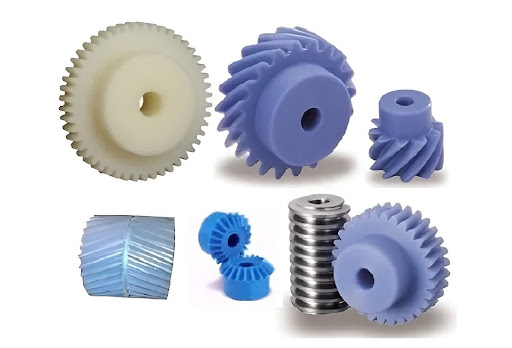
by Kandui Industries Pvt. Ltd. | Jul 22, 2024 | Additive Masterbatch, Masterbatches
Slip additive masterbatch is a type of masterbatch used in the plastics industry to reduce the coefficient of friction between plastic surfaces. This can help prevent sticking, improve processing, and enhance the overall performance of plastic products.
Here’s An Overview Of The Production Process And Usage Of Slip Additive Masterbatch:
Production Process:
Raw Materials: The primary raw materials for slip additive masterbatch production include a carrier resin and the slip agent itself. The carrier resin is typically a polymer compatible with the target application, such as polyethylene (PE), polypropylene (PP), or other plastics. The slip agent is a specialized additive that reduces friction.
Mixing: The slip agent is compounded or blended with the carrier resin using specialized equipment like twin-screw extruders or high-speed mixers. The goal is to achieve a uniform and homogenous mixture. The concentration of the slip agent in the masterbatch can vary based on the desired slip properties and the type of plastic it will be used with.
Pelletizing: The compounded mixture is then pelletized, forming small granules or pellets of slip additive masterbatch. These pellets are easy to handle and can be stored until needed.
Usage: Slip additive masterbatch is used in various plastic processing applications to reduce the friction between plastic surfaces and provide several benefits:
Enhanced Processing: It is commonly used in plastic processing, such as injection moulding, extrusion, and film production. The reduced friction helps in smoother processing, preventing melt fracture, and improving the flow of molten plastic. This can lead to better-quality products with fewer defects.
Preventing Sticking: Slip additive masterbatch can prevent plastic products from sticking together during manufacturing and storage. This is particularly useful in applications like packaging, where products need to easily separate from one another.
Improved Surface Quality: The use of slip additives can lead to improved surface quality in plastic products, reducing surface imperfections and enhancing the appearance of the final product.
Functionality: Slip additives are used in various industries, such as food packaging and medical devices, to ensure that products can be easily handled or separated without any friction-related issues.
Cost Savings: By reducing the coefficient of friction, slip additive masterbatch can also reduce wear and tear on processing equipment and packaging machinery, leading to cost savings in maintenance and replacement.
Customization: Manufacturers can adjust the concentration of slip additive masterbatch to meet specific performance requirements, allowing for customization based on the application’s needs.
In summary, slip additive masterbatch is a valuable tool in the plastics industry for reducing friction between plastic surfaces. Its production involves compounding a carrier resin with a slip agent, and its usage improves processing, prevents sticking, enhances surface quality, and offers customization options for various plastic applications.

by Kandui Industries Pvt. Ltd. | Jul 8, 2024 | Color Masterbatch, Masterbatches
Engineering polymer colour masterbatch offers several advantages in various industries.
Here Are The Top Five Advantages:
Consistent Coloration:
Engineering polymer colour masterbatch ensures consistent and uniform coloration of plastic materials. This is essential for industries where colour consistency is crucial, such as automotive, consumer electronics, and packaging. The masterbatch contains pre-dispersed pigments or dyes, resulting in even colour distribution throughout the final product.
Ease of Use:
Using colour masterbatch simplifies the manufacturing process. Instead of handling and measuring individual pigment powders, manufacturers can directly add the masterbatch to the polymer resin. This streamlines production, reduces the risk of errors, and saves time and labor costs.
Cost-Effective:
Engineering polymer colour masterbatch can be more cost-effective than buying individual pigments in bulk. The pre-dispersed pigments in masterbatch form can be precisely dosed, minimizing waste and reducing material expenses. Additionally, it often requires less storage space than storing multiple pigment powders.
Customization:
Masterbatch allows for easy colour customization. Manufacturers can work with suppliers to create custom colours that meet specific design or branding requirements. This flexibility is valuable in industries where unique product aesthetics are a competitive advantage.
Improved Quality:
Using colour masterbatch can lead to higher product quality. Because the pigments are uniformly dispersed, there is less risk of streaking or uneven coloration in the final product. This consistency contributes to better overall product appearance and performance.
In summary, engineering polymer colour masterbatch simplifies the coloration process, enhances consistency, reduces costs, offers customization options, and contributes to higher product quality, making it a valuable choice for industries that require coloured plastic materials.

by Kandui Industries Pvt. Ltd. | Jun 3, 2024 | Masterbatches
Masterbatches play a crucial role in the plastics industry, serving as a cost-effective and efficient way to incorporate colour, additives, or other properties into plastic products. When sourcing masterbatches, choosing the right supplier is paramount to the success of your manufacturing processes. In recent years, Masterbatch Company In India has emerged as a prominent hub for masterbatch manufacturing.
Table of Content
In this blog post, we will explore the key factors to consider when buying masterbatches from an Indian supplier.
Quality Assurance and Certifications:
Quality is non-negotiable in the plastics industry. Ensure that the Indian masterbatch manufacturer adheres to international quality standards and possesses relevant certifications such as ISO 9001:2015. Certifications signify a commitment to quality control processes and consistency in product performance. Look for suppliers who regularly conduct quality tests on their masterbatches, ensuring they meet industry-specific requirements.
Product Range and Customization Options:
A reputable masterbatch manufacturer should offer a diverse range of products to cater to different applications and industries. Consider suppliers that provide a wide spectrum of masterbatch types, including colour, additive, and specialty masterbatches. Additionally, the ability to customize masterbatches according to your specific requirements is a crucial factor. A supplier with in-house research and development capabilities can offer tailor-made solutions to meet your unique product specifications.
Supply Chain Reliability and Timely Delivery:
Timely delivery is critical in the manufacturing process to maintain efficiency and meet production deadlines. Evaluate the Indian masterbatch supplier’s supply chain capabilities and assess their track record in delivering orders on time. A reliable supplier should have robust logistics and distribution networks in place to ensure that your masterbatches reach you in a timely manner, minimizing production delays.
Technical Support and Expertise:
Technical support is invaluable, especially when dealing with complex applications or troubleshooting issues. Look for a supplier that offers comprehensive technical assistance and has a team of experts who can guide you through the selection and application processes. The supplier’s technical expertise can contribute to the successful integration of masterbatches into your manufacturing processes, ensuring optimal performance and quality in the end product.
Also Read:- The Process Of Slip Additive Masterbatch Production And Its Usage
Environmental and Regulatory Compliance:
Sustainable and eco-friendly practices are gaining prominence in the plastics industry. Choose an Indian masterbatch supplier that complies with environmental regulations and adopts sustainable manufacturing practices. Suppliers committed to minimizing their environmental impact demonstrate responsibility and contribute to the overall sustainability goals of your business. Inquire about the supplier’s approach to waste management, recycling, and adherence to regulatory standards.
Choosing the right Masterbatch Company In India involves a thorough evaluation of various factors, including quality assurance, product range, supply chain reliability, technical support, and environmental compliance. By carefully considering these aspects, you can ensure that your partnership with an Indian masterbatch supplier contributes to the success and sustainability of your manufacturing processes.

by Kandui Industries Pvt. Ltd. | Aug 11, 2023 | Masterbatches
Introduction:
In today’s world, where safety and product quality are of utmost importance, flame retardant masterbatches have become indispensable in various industries. These specialized additives are designed to enhance the fire resistance of plastics, making them crucial for applications in construction, automotive, electronics, and more. However, with a wide range of options available, selecting the right flame retardant masterbatch can be a daunting task. In this blog, we will explore the key considerations that can help you make an informed decision and ensure optimal fire safety in your products.
Complying with Industry Standards:
When choosing a flame retardant masterbatch, it is essential to ensure that it complies with relevant industry standards and regulations. Look for masterbatches that meet global fire safety standards such as UL 94 (Underwriters Laboratories), EN 13501 (European standard), or ASTM E84 (American standard). Compliance with these standards ensures that your end products will meet safety requirements and have undergone rigorous testing for flame resistance.
Material Compatibility:
Flame retardant masterbatches come in various formulations, and not all may be compatible with the base plastic material you are using. It is crucial to select a masterbatch that is specifically designed to work well with the plastic resin you are using in your production. Consider factors like the melt flow index, processing temperature, and compatibility of the masterbatch with your chosen polymer to ensure successful incorporation.
Desired Level of Flame Resistance:
Different applications may require varying degrees of fire resistance. Some products may only need to meet basic fire safety standards, while others may require high levels of flame resistance to ensure optimal protection. Choose a flame retardant masterbatch that aligns with the specific fire safety requirements of your end-product application.
Environmental and Health Considerations:
With increasing emphasis on sustainability and environmental responsibility, it is essential to consider the environmental impact of the flame retardant masterbatch you select. Opt for masterbatches that are free from harmful substances like halogens, heavy metals, and other hazardous materials. Eco-friendly flame retardant masterbatches not only ensure fire safety but also contribute to a healthier and greener environment.
Processing Efficiency:
Efficient processing is crucial in any manufacturing operation. Select a flame retardant masterbatch that is easy to handle and disperses uniformly in your base polymer during processing. Masterbatches that do not affect the physical properties of the plastic, such as colour, mechanical strength, or transparency, are highly desirable.
Performance under Various Conditions:
Consider the intended application and operating conditions of your end product. Some flame retardant masterbatches may perform well under certain temperatures and conditions, while others may be more suitable for different scenarios. Understanding the specific requirements and performance expectations will help you choose the most appropriate flame retardant masterbatch.
Conclusion:
Flame retardant masterbatches play a vital role in enhancing fire safety across numerous industries. Selecting the right flame retardant masterbatch involves careful consideration of industry standards, material compatibility, desired flame resistance level, environmental impact, processing efficiency, and performance under various conditions. By making informed choices, manufacturers can ensure their products meet the highest fire safety standards while maintaining the desired quality and characteristics of their plastic materials. Remember, investing in the right flame retardant masterbatch is an investment in safety and customer confidence.

by Kandui Industries Pvt. Ltd. | Aug 9, 2023 | Masterbatches
Introduction:
Polyester masterbatches are a class of versatile additives that have gained significant popularity in the plastic industry. These masterbatches are specifically designed to enhance the performance and appearance of polyester-based plastics, making them a preferred choice for a wide range of applications. In this blog, we will provide a comprehensive introduction to polyester masterbatches, exploring their properties, benefits, and various applications in the modern world of plastic manufacturing.
Understanding Polyester Masterbatches:
Polyester masterbatches are concentrated blends of pigments, additives, and carriers that are compatible with polyester resins. They are typically in pellet form and are added to the base polymer during the plastic processing stage. These masterbatches serve as a convenient way to introduce colour, improve processing, and impart specific properties to the final polyester product.
Properties of Polyester Masterbatches:
a. Colour Enhancement:
One of the primary functions of polyester masterbatches is to add vibrant and consistent colours to polyester plastics. Manufacturers can choose from an extensive palette of colours, allowing for customization and branding of their products.
b. UV Stability:
Polyester masterbatches can be formulated to provide UV stability, protecting the end-products from the harmful effects of prolonged exposure to sunlight and ensuring the longevity of the plastic materials.
c. Flame Retardancy:
By incorporating flame retardant additives into polyester masterbatches, manufacturers can significantly enhance the fire resistance of polyester-based products, making them safer for various applications.
d. Anti-Static and Anti-Fog Properties:
Polyester masterbatches can be tailored to provide anti-static properties, preventing the build-up of static charge on the plastic surface. Additionally, they can offer anti-fog properties, making them ideal for applications in the food packaging industry.
Applications of Polyester Masterbatches:
a. Packaging Industry:
Polyester masterbatches find extensive use in the packaging industry. They are commonly employed in the production of polyester films, which are widely used for flexible packaging, labels, and wrapping applications.
b. Textiles:
Polyester is a popular material in the textile industry due to its excellent properties such as durability, wrinkle resistance, and ease of maintenance. Masterbatches are used to add colour and impart specific functionalities to polyester fibres and fabrics.
c. Automotive:
Polyester masterbatches play a significant role in automotive applications, particularly in the production of various interior and exterior components. They help achieve desired colours, UV stability, and flame retardancy for automotive parts.
d. Electrical and Electronics:
Polyester masterbatches are utilized in the manufacturing of electrical components, such as connectors and insulating materials, where colour consistency and flame retardancy are essential.
e. Construction:
In the construction sector, polyester masterbatches are used for producing plastic materials like roofing sheets, pipes, and fittings, where UV stability and weather resistance are critical factors.
Conclusion:
Polyester masterbatches have become indispensable in the world of plastic manufacturing, offering a wide range of properties and benefits that enhance the performance and aesthetics of polyester-based products. From adding vibrant colours to providing UV stability and flame retardancy, these versatile additives find applications in diverse industries such as packaging, textiles, automotive, electrical, electronics, and construction. Manufacturers can harness the potential of polyester masterbatches to create innovative and high-quality products that meet the ever-evolving demands of the modern market.

by Kandui Industries Pvt. Ltd. | Aug 7, 2023 | Masterbatches
Introduction:
As we step into 2023, the need for high-quality and durable plastic products has never been greater. Among the various challenges that plastics face, UV degradation remains a significant concern. Ultraviolet (UV) radiation from the sun can cause degradation and discoloration of plastic materials, leading to reduced product lifespan and compromised aesthetics. To address this issue, UV stabilizer masterbatches have emerged as an essential solution. In this blog, we will explore the top five reasons why incorporating UV stabilizer masterbatches into plastic manufacturing is crucial for ensuring the longevity and performance of plastic products in 2023.
Extended Product Lifespan:
UV stabilizer masterbatches play a pivotal role in increasing the lifespan of plastic products. By effectively blocking and absorbing harmful UV radiation, these masterbatches prevent premature degradation and deterioration of plastics exposed to sunlight. Products like outdoor furniture, automotive components, and construction materials, when protected with UV stabilizers, maintain their structural integrity and appearance for a much longer time, reducing replacement costs and promoting sustainability.
Preserved Aesthetics:
The visual appeal of plastic products is a crucial aspect of consumer satisfaction. UV stabilizer masterbatches help preserve the original appearance and color of plastics, preventing the development of unsightly yellowing, fading, or chalkiness caused by UV exposure. Whether it’s vibrant packaging, attractive outdoor signage, or colorful playground equipment, UV stabilizers ensure that the plastic products retain their aesthetics and look as good as new, even after prolonged exposure to the sun.
Enhanced Performance in Outdoor Applications:
In 2023, outdoor applications of plastic products are expected to witness a surge. From garden equipment and sports accessories to outdoor electronics, plastics are widely used due to their lightweight and cost-effectiveness. However, exposure to UV radiation can negatively impact their performance. Incorporating UV stabilizer masterbatches allows manufacturers to create plastics that can withstand harsh outdoor conditions, maintaining their mechanical properties and functionality.
Sustainable Solution:
As environmental consciousness continues to grow, sustainability is at the forefront of plastic manufacturing. UV stabilizer masterbatches contribute to sustainability efforts by increasing the longevity of plastic products. By extending the useful life of plastic items, the need for replacements and waste generation is reduced. Moreover, longer-lasting plastic products minimize the demand for virgin plastics, thereby conserving natural resources and reducing the carbon footprint of the industry.
Versatility and Compatibility:
UV stabilizer masterbatches are designed to be versatile and compatible with various plastic resins. They can be easily incorporated into the manufacturing process without compromising the properties or processing characteristics of the base polymer. Whether it’s polyethylene, polypropylene, PVC, or other plastic types, UV stabilizer masterbatches provide a seamless solution to enhance UV resistance across a broad range of plastic applications.
Conclusion:
As we move into 2023, the importance of UV stabilizer masterbatches in plastic manufacturing cannot be overstated. Their ability to extend product lifespan, preserve aesthetics, enhance outdoor performance, and contribute to sustainability makes them a crucial component in creating durable and visually appealing plastic products. By utilizing UV stabilizer masterbatches, manufacturers can meet the growing demands of consumers for high-quality, long-lasting plastics that can withstand the challenges posed by UV radiation. Embracing this technology ensures that plastic products remain reliable, attractive, and environmentally responsible in the years to come.







